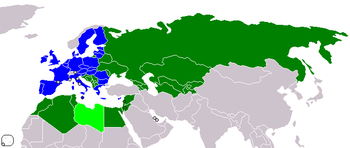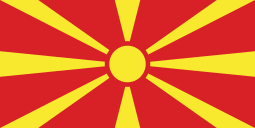TEMPUS
The TEMPUS (Trans-European Mobility Programme for University Studies) program encourages higher education institutions in the EU Member States and partner countries to engage in structured cooperation[1] through the establishment of "consortia". The "consortia" implement Joint European Projects (JEPs) with a clear set of objectives. Such projects may receive financial aid for two or three years. Tempus also provides Individual Mobility Grants (IMGs) to individuals working in Higher Education sector to help them work on certain specified activities in other countries.[2]

As of 1 January 2014, Tempus-like activities, namely capacity building activities, have become part of a new cooperation programme called Erasmus+. These activities involve existing Tempus countries, in addition to countries from Latin America, Asia and Africa, the Caribbean and the Pacific.[3]
Member states
Participating countries of TEMPUS include:

Partnership countries (organized by region) include:














Asia:
Example projects
- Tambov State Technical University's Centre for International Specialist Training (CIST) runs a specialist training course, "English for Students, Lecturers and Administrators of Technical Universities", developed within the framework of TEMPUS.[4]
- According to 2013 figures of the Minister of Education between 1993 and 2013 40% of Ukrainian higher education establishments have participated in TEMPUS projects.[1] In 2008, TEMPUS opened offices in both Jerusalem and Ramallah.[2]
References
- 40% of Ukrainian universities participate in EU Tempus program within 20 years, says education minister, Interfax-Ukraine (14 April 2013)
- Syrquin, Ari (16 July 2008). "What's New in the EU: Tempus office opens in Jerusalem". Jerusalem Post. Retrieved 3 June 2013.
- . "The future of the Tempus programme". EU. Retrieved 12 Jan 2015.
- Shelenkova, Irina and Mishchenko, Elena (2012(). "Innovative Language Curricula at Tambov State Technical University". Saratov State Technical University, International Conference on Information Technologies, International Conference on Information Technologies 2012. Retrieved 3 June 2013.
Further reading
- Ayoubi, R.M. and Massoud, H. K. (2011). "Questioning the Role of Internationalization in the Nationalization of Higher Education: the Impact of the EU TEMPUS Programme on Higher Education in Syria", European Journal of Higher Education, Vol 1, Issue 4, pp. 352–368. (Taylor and Francis, indexed by ERA)